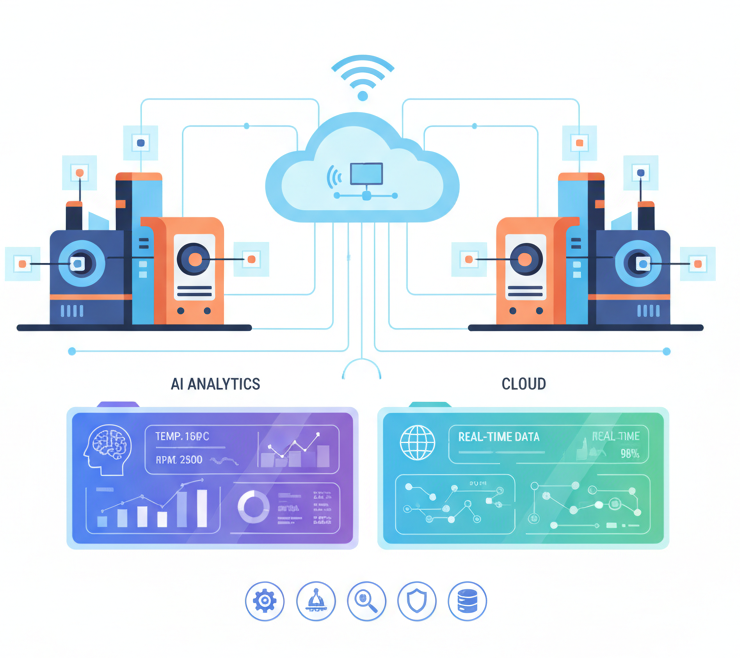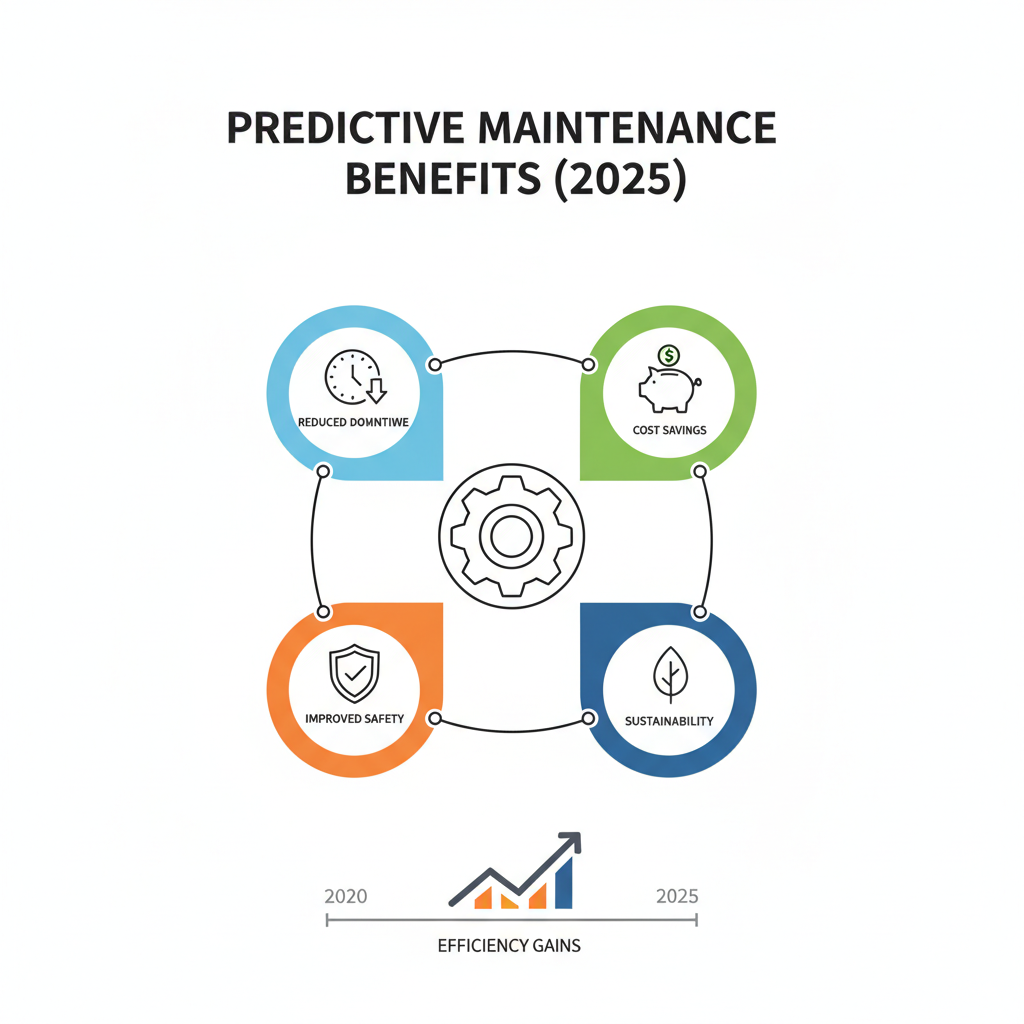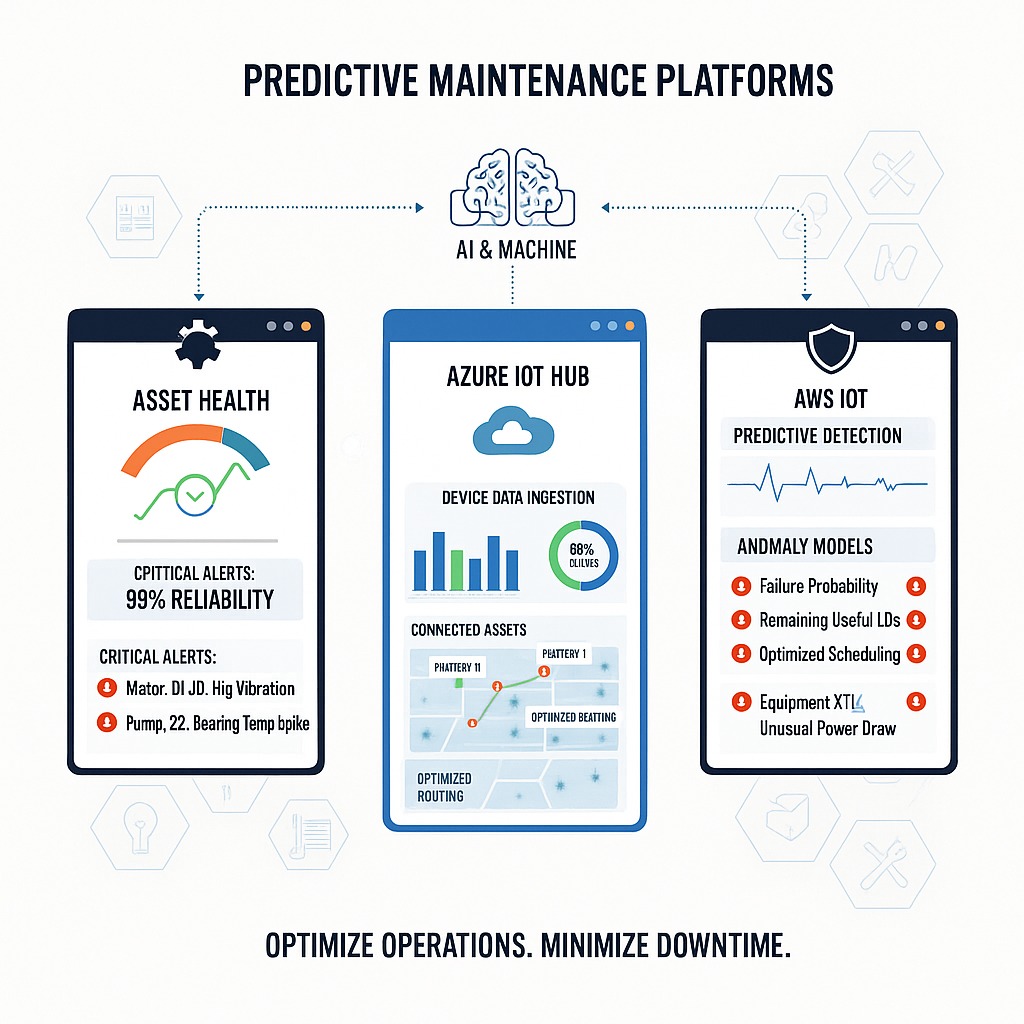
Introduction
IoT and Predictive Maintenance in 2025 are transforming industries by combining smart sensors, AI-driven analytics, and real-time monitoring to reduce downtime, cut costs, and improve efficiency. From manufacturing to healthcare, organizations are adopting these technologies to stay competitive in a fast-changing digital landscape.
What is Predictive Maintenance?
Predictive maintenance is a proactive maintenance strategy that uses real-time data from IoT devices, sensors, and connected machinery to predict potential equipment failures before they happen. Unlike traditional reactive or scheduled maintenance, PdM ensures that repairs or servicing occur only when needed, reducing unnecessary costs and extending asset lifecycles.
Role of IoT in Predictive Maintenance

IoT plays a critical role in predictive maintenance by:
- Collecting Real-Time Data: Smart sensors capture temperature, vibration, pressure, and performance metrics from equipment.
- Analyzing Performance Trends: AI and machine learning analyze patterns to identify anomalies or early warning signs of failure.
- Enabling Remote Monitoring: Businesses can monitor equipment health from anywhere, ensuring quick response times.
- Automating Alerts: IoT systems send automatic alerts to engineers when unusual activity is detected.
Why Predictive Maintenance is Important in 2025

- Reduced Downtime – Machine downtime can cost industries millions. Predictive maintenance minimizes unexpected failures, keeping production lines running.
- Cost Savings – By preventing major breakdowns, companies save on emergency repairs and avoid expensive replacements.
- Increased Asset Lifespan – Regular monitoring ensures machines operate efficiently, extending their usable life.
- Improved Safety – Early detection of malfunctions reduces workplace accidents and ensures compliance with safety standards.
- Sustainability & Energy Efficiency – Predictive maintenance helps companies meet green initiatives by reducing energy waste and optimizing resource usage.
Industries Leading Predictive Maintenance in 2025
- Manufacturing: Smart factories are leveraging IoT-driven predictive maintenance to achieve zero unplanned downtime.
- Energy & Utilities: Power plants and wind farms use PdM to monitor turbines, transformers, and grids.
- Transportation & Logistics: Airlines, shipping companies, and fleet managers rely on predictive insights to prevent costly vehicle or engine failures.
- Healthcare: Medical equipment like MRI machines and ventilators are maintained proactively to ensure patient safety.
Future Outlook of Predictive Maintenance with IoT

As we move deeper into 2025, the predictive maintenance market is expected to grow exponentially due to advances in 5G, edge computing, and AI integration. Organizations adopting IoT-driven PdM are not just saving money but also gaining a competitive advantage by ensuring efficiency, reliability, and customer satisfaction.
Best Software and Resources to Start Practicing Predictive Maintenance

Getting started with predictive maintenance doesn’t have to be overwhelming. Thanks to IoT platforms and open-source tools, professionals and beginners can start practicing PdM in real-world scenarios. Here are some of the best resources in 2025:
1. IBM Maximo Application Suite
A leading enterprise-level asset management platform that integrates IoT, AI, and analytics for predictive maintenance. It offers real-time equipment monitoring, work order management, and advanced failure prediction.
IBM Maximo – enterprise asset management platform with PdM features.https://www.ibm.com/products/maximo?utm_source=chatgpt.com
2. Siemens MindSphere
A powerful IoT-as-a-Service solution that connects machines, gathers sensor data, and provides predictive insights. Widely used in manufacturing and industrial automation.
3. Azure IoT Hub + Azure Machine Learning
Microsoft’s IoT Hub allows seamless device connectivity and data streaming, while Azure ML enables building predictive models to detect failures before they happen. Great for developers exploring PdM solutions.
Microsoft Azure IoT Hub – for device connectivity and predictive insights.https://azure.microsoft.com/en-us/products/iot-hub/?utm_source=chatgpt.com
4. AWS IoT Analytics
Amazon’s cloud-based solution processes IoT sensor data and applies machine learning for predictive insights. It’s scalable and ideal for industries dealing with large equipment fleets.
AWS IoT Analytics – cloud-based predictive analytics.https://aws.amazon.com/iot-analytics/?utm_source=chatgpt.com
5. TensorFlow & Python Libraries (Open Source)
For students and professionals, starting with Python libraries like TensorFlow, Scikit-learn, and Pandas is a great way to build custom predictive maintenance models using IoT datasets.
6. Kepware & PTC ThingWorx
Kepware provides industrial connectivity solutions to gather machine data, while ThingWorx offers a platform to build IoT-enabled predictive maintenance applications.
Learning Resources for Beginners
- Coursera & Udemy Courses – Look for “Predictive Maintenance with IoT” or “Industrial IoT & AI” courses.
- Kaggle Datasets – Free predictive maintenance datasets (turbine failures, machine breakdowns, sensor logs) to practice building ML models.
- GitHub Projects – Search “predictive maintenance IoT” to find open-source implementations with Python and ML.
Conclusion
The integration of IoT and predictive maintenance in 2025 marks a turning point for industries striving for efficiency and innovation. Businesses that embrace these technologies will reduce costs, improve safety, and stay ahead of competition. As IoT evolves, predictive maintenance will no longer be a luxury—it will be a necessity for sustainable growth.



